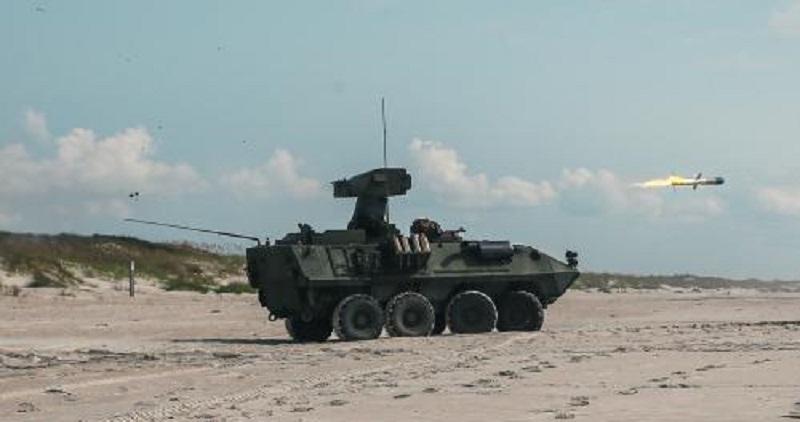A U.S. Marine Corps light armored vehicle makes its way down the beach. Marines with 2d Light Armored Reconnaissance Battalion, 2d Marine Division, conduct system checks and retrieve coordinates for the target placed off the coast of Onslow Beach. Once locked on the coordinates, the command is given, “fire, fire, fire.” In order to enhance the Marine Corps’ capability to control littoral areas with a reduced footprint, 2d LAR conducted a test of a radio frequency missile fired from a TOW missile system on Camp Lejeune, North Carolina, Sept. 19, 2022. When utilized properly, radio frequencies give the unit more control of the missile’s trajectory by eliminating factors dictated by their surroundings.
“The purpose of this live-fire exercise was to validate that a radio frequency missile can be employed against threats on or coming from the water surface. The radio frequency missile does not utilize a wire to communicate with the gunner, it uses a radio frequency signal between the missile and launch tube,” said Chief Warrant Officer 3 Jon Osborn, the battalion gunner for 2d LAR.
“Once a TOW missile is launched the copper wires unspool from the missile and sag. They can get caught on debris like trees or bushes. The wires, while shooting over water, can become submerged and cause the missile to be erratic,” explained Sgt. Courtland Mabe, a Douglasville, Georgia, native and vehicle commander with 2d LAR.

The BGM-71 TOW (“Tube-launched, Optically tracked, Wire-guided”) is an American anti-tank missile. First produced in 1970, TOW is one of the most widely used anti-tank guided missiles. It can be found in a wide variety of manually carried and vehicle-mounted forms, as well as widespread use on helicopters. TOW is designated as a BGM by the U.S. military: a multiple launch environment (B) surface attack (G) guided missile (M). TOW systems have also been developed for vehicle specific applications on the M2/M3 Bradley IFV/CFV, the LAV-AT, the M1134 Stryker ATGM carrier, and the now retired M901 ITV (Improved TOW Vehicle); they are generally referred to as TOW Under Armor (TUA).
The TOW missile system on the LAV allows us to load two missiles and swiftly switch from one to another. This ties directly back to the Marine Corps’ efforts to control littoral areas and waterways. This live-fire validated that the TOW missile system can be employed to restrict access from the sea. Capabilities of this nature aid the Department of the Navy with maritime control and freedom of movement. Every Marine and Sailor with 2d Marine Division is continuously striving toward the mission, to generate, train and certify forces in order to conduct expeditionary operations in support of II Marine Expeditionary Force campaign objectives and crisis response tasking.
















